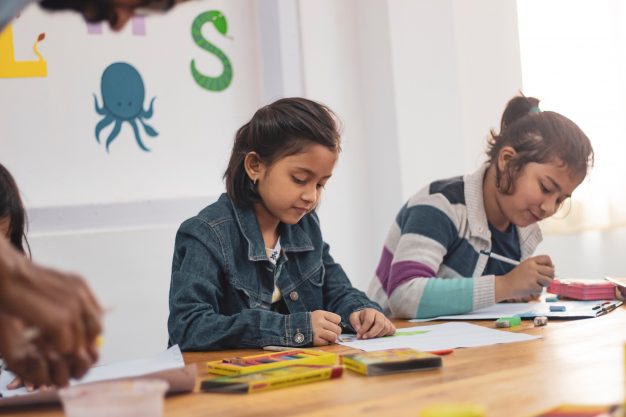
6 Tips on implementing and promoting healthy movement in your classroom
Children have been experiencing a decline in physical activity in recent years. At school they are mostly seated, someone is always driving them home and at home – between homework and time spent with various devices – they don’t move that much either.
This is why many teachers have been thinking of various creative ways to include exercising or some kind of physical activity into the daily life of their students. Movement is also excellent for learning and improving their attention.
Here are some of the most creative examples of promoting movement in the classroom.
1. Take a nature walk
This is one of the most beloved movement exercises in classrooms across the world. Children love spending time outside – it gives them a chance to see various interesting things, breathe some fresh air and just spend some time with their friends. They don’t even see nature walks as learning but more as a break and this is why they learn more.
Take your students outside and let them bring a notebook and a pen and tell them about various plants, animals, insects etc. “Let them make a herbarium or record the smells coming from different plants and so on. There are ample opportunities for you to incorporate various subjects while your students are enjoying the nature and movement”, – explains Theodore Paige, an Educator at Ukwritings.
2. Role-play activities for history
Again, this activity is a favourite among students. It allows them to experience history with a more hands-on approach instead of just hearing about it. This activity also involves a lot of movement between preparing costumes and acting out various scenes.
They will learn better and easier if they get to be involved in role-playing. The same can be done with literature pieces – while they may be boring to them when they simply read a story or you read it to them, they will enjoy it much more if you let them play it out.
3. Ball-Toss Spelling
When in your spelling class, purchase or make a soft ball and use it for your spelling exercises. Let all of your students stand up, assign them a word and spell the first letter. Then, throw the ball to a student of your choice and let them say the next letter after which he would throw the ball to the student of his choice and so on. “Do this until every word you assigned is spelled correctly. It’s even better if you do this activity with them. This way of introducing movement is guaranteed to make everyone laugh and improve the mood. You can do a similar thing for equations or other subjects – get creative”, – says Shane Gonzalez, a Spelling Tutor at Essayroo and Study Demic.
4. Do pattern dancing
Have your students work together to come up with a dance for a mathematical pattern like ABCB or something similar. Then you can all do it together. For instance, there could be a hop, a skip then a spin and then another skip – it will make math fun and your students will have a great way to exercise.
5. Implement physical activity breaks
Between classes or before each class, you can encourage a 5-minute exercise. Paint a jar in fun colours and write different exercise techniques on pieces of paper or wood. Have your students draw from the jar and then do the exercise together. This is a fun way to build a good relationship with them and also let them spend some energy so that they can be calm while learning later.
6. Implement a movement policy
Movement policies can vary between teachers but all are creative and include exercising in a great way. Write it out on a large piece of paper and include all of the requirements. For instance, if someone wants to sharpen their pencil, they have to hop on one leg to the bin. Thomas Woodard, a Language tutor and writer at Boomessays and StateOfWriting comments: “If someone talks in the classroom or says something inappropriate, they have to do a certain number of lunges and so on. The opportunities with movement policies are endless and children usually love it”.
Final Words
While you can’t be there all day with your students to ensure that they exercise enough, you can definitely do something about it in your classroom. Follow these tips or come up with your own techniques to ensure that your students have had enough movement during the day.




